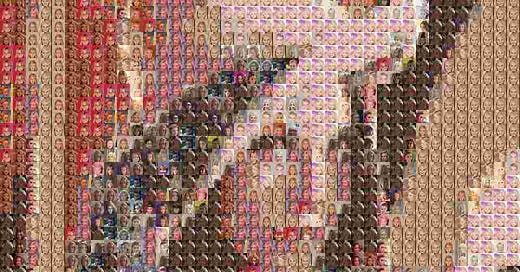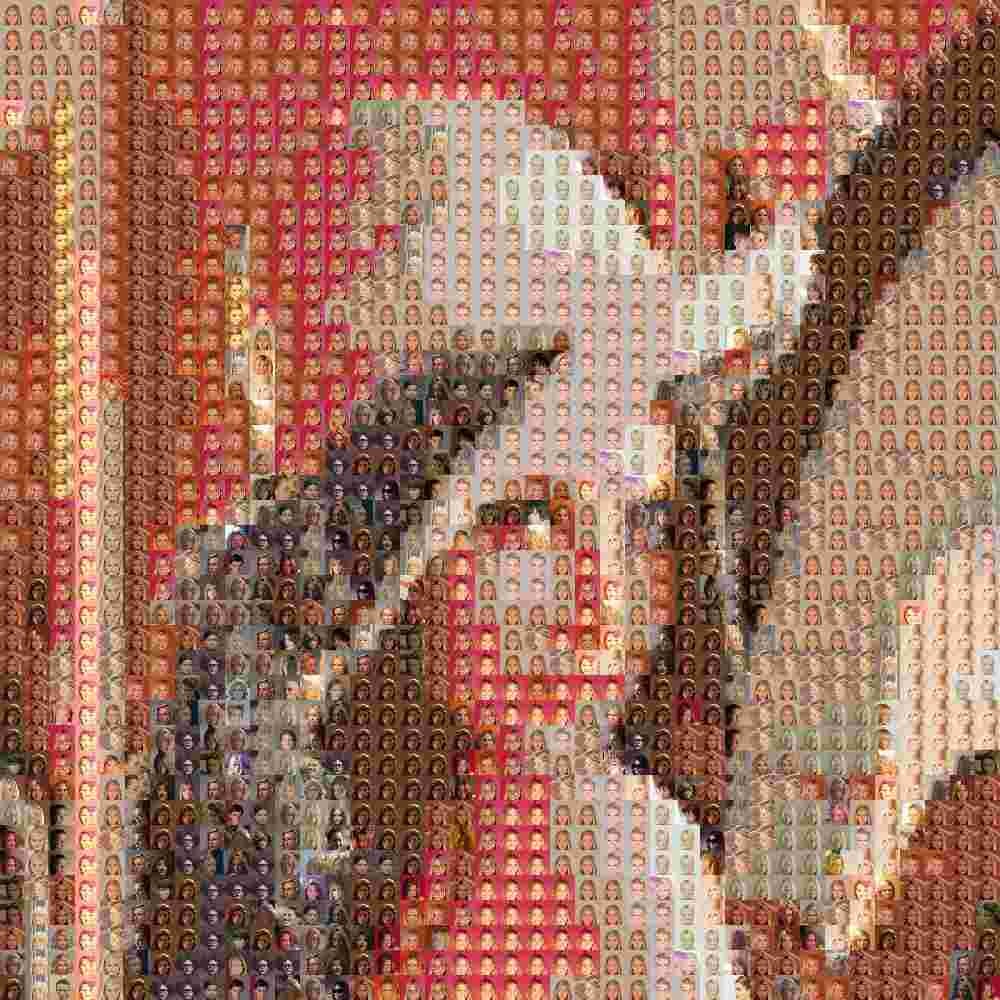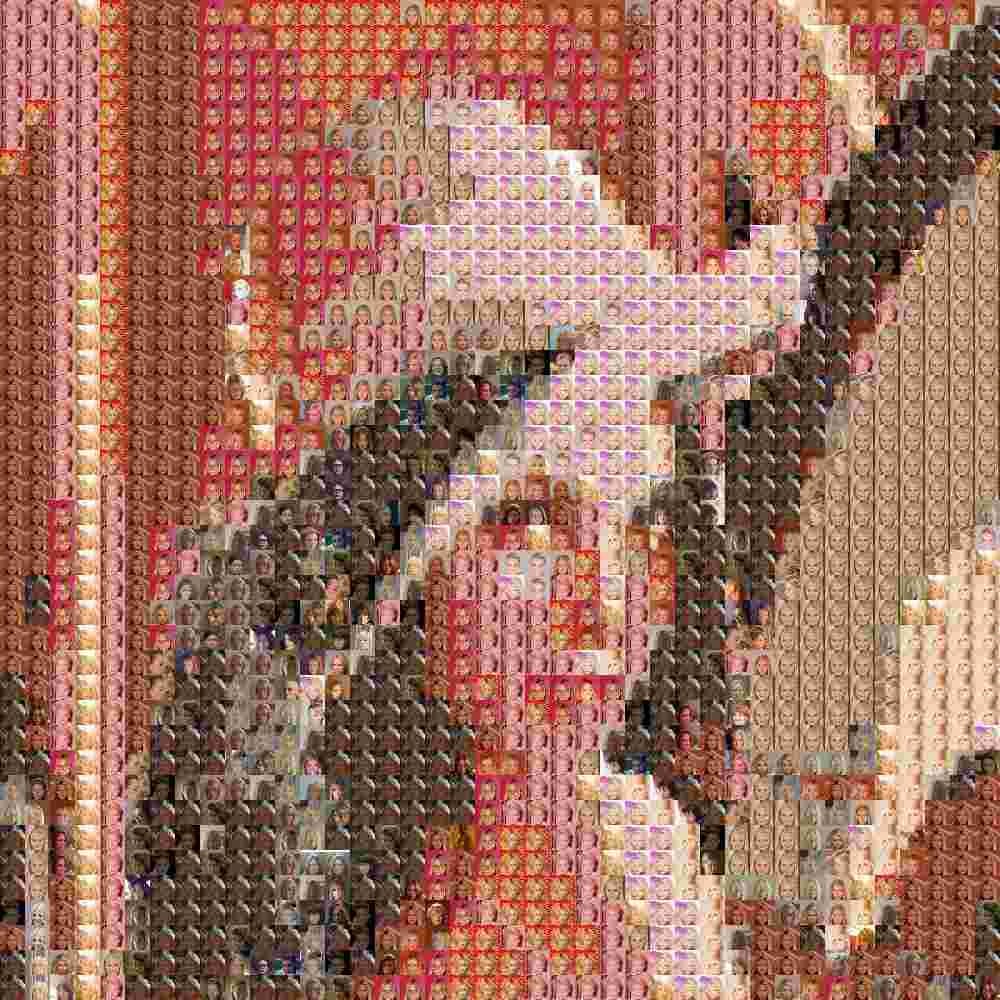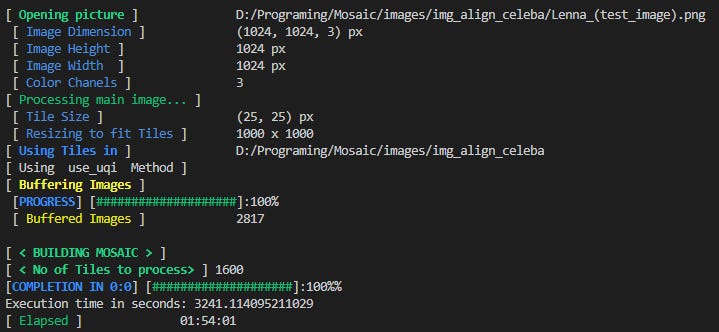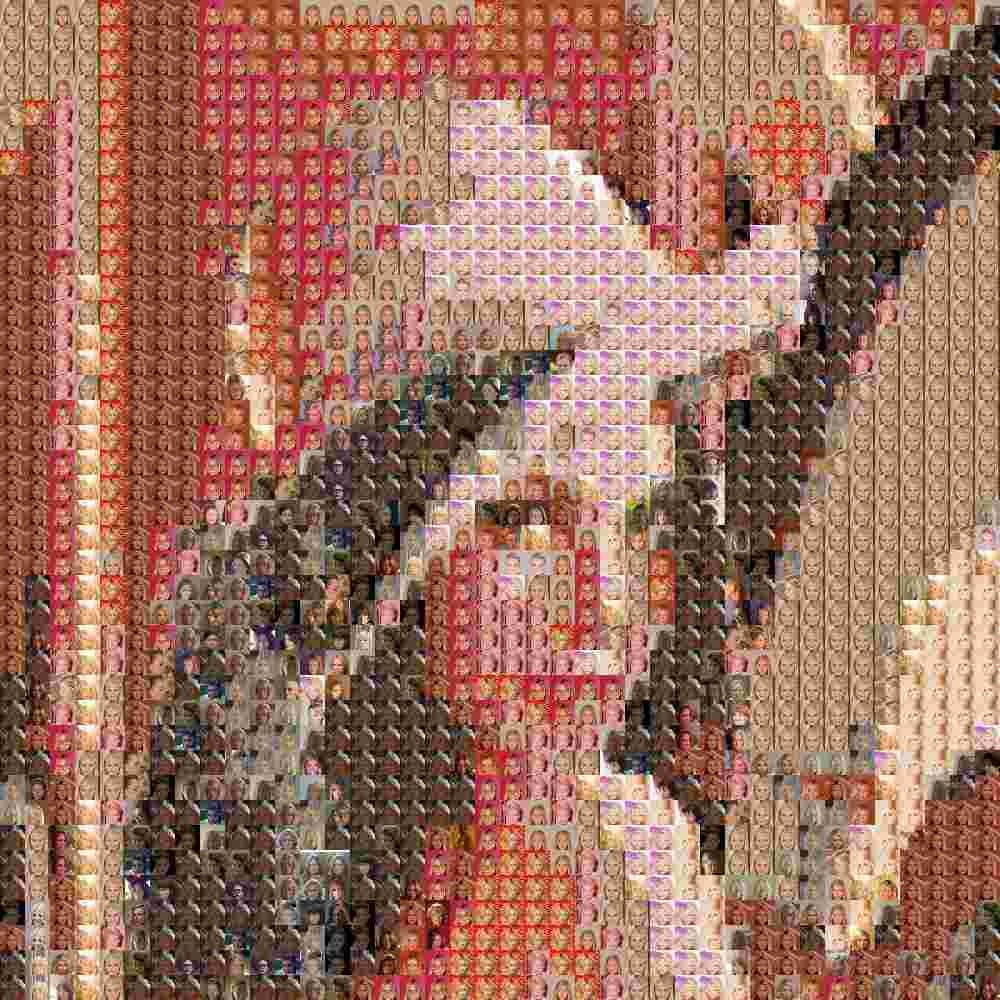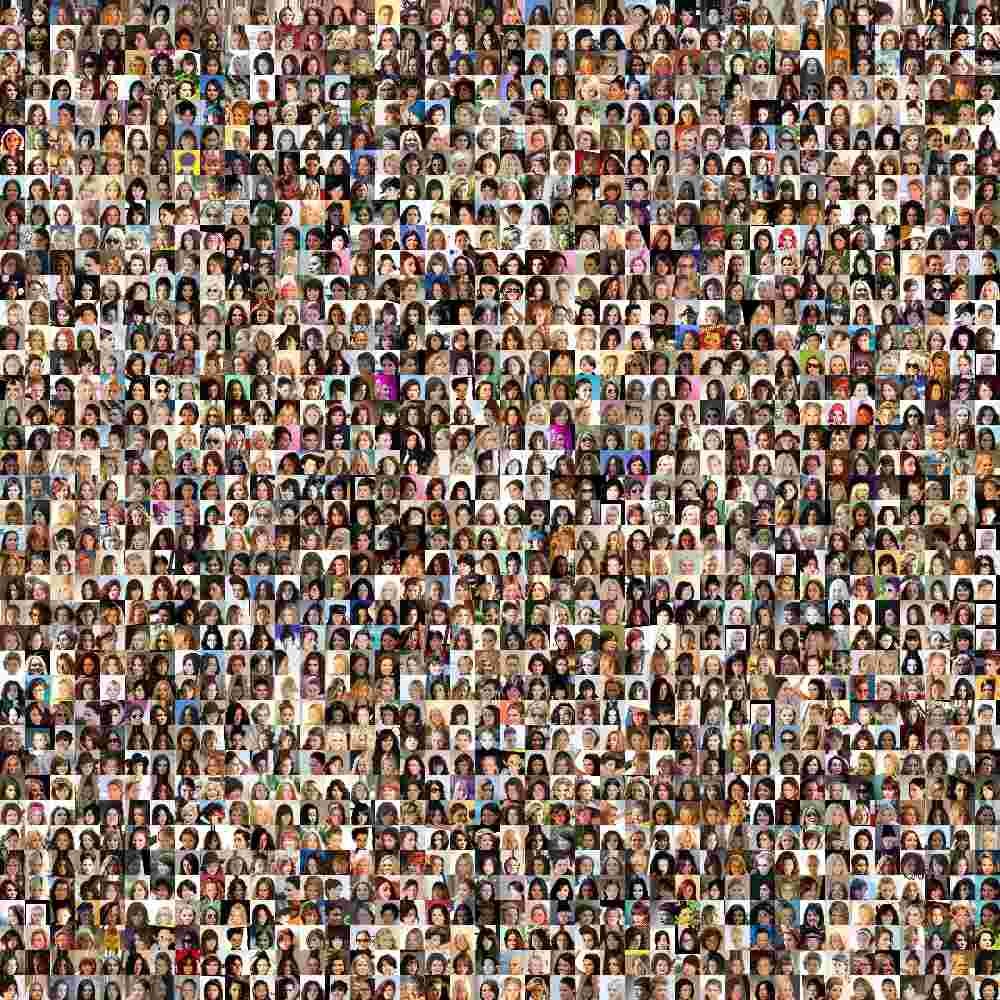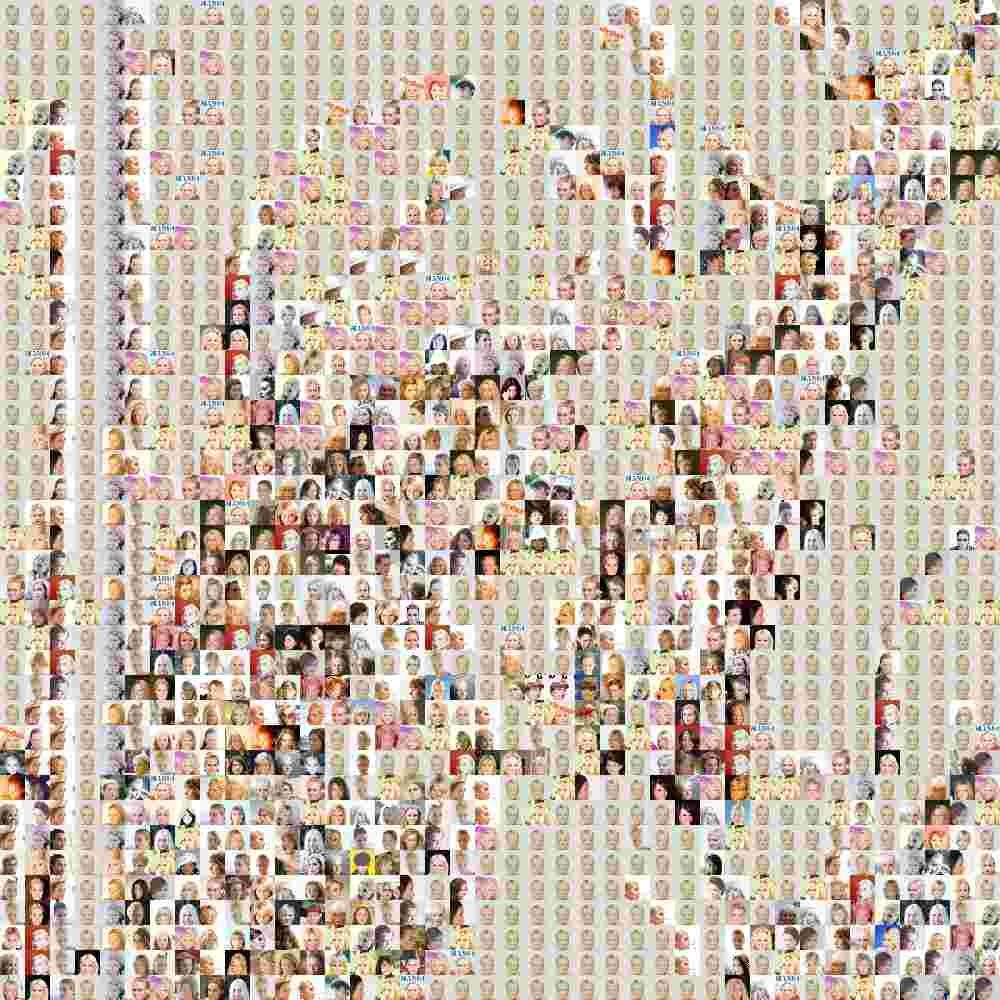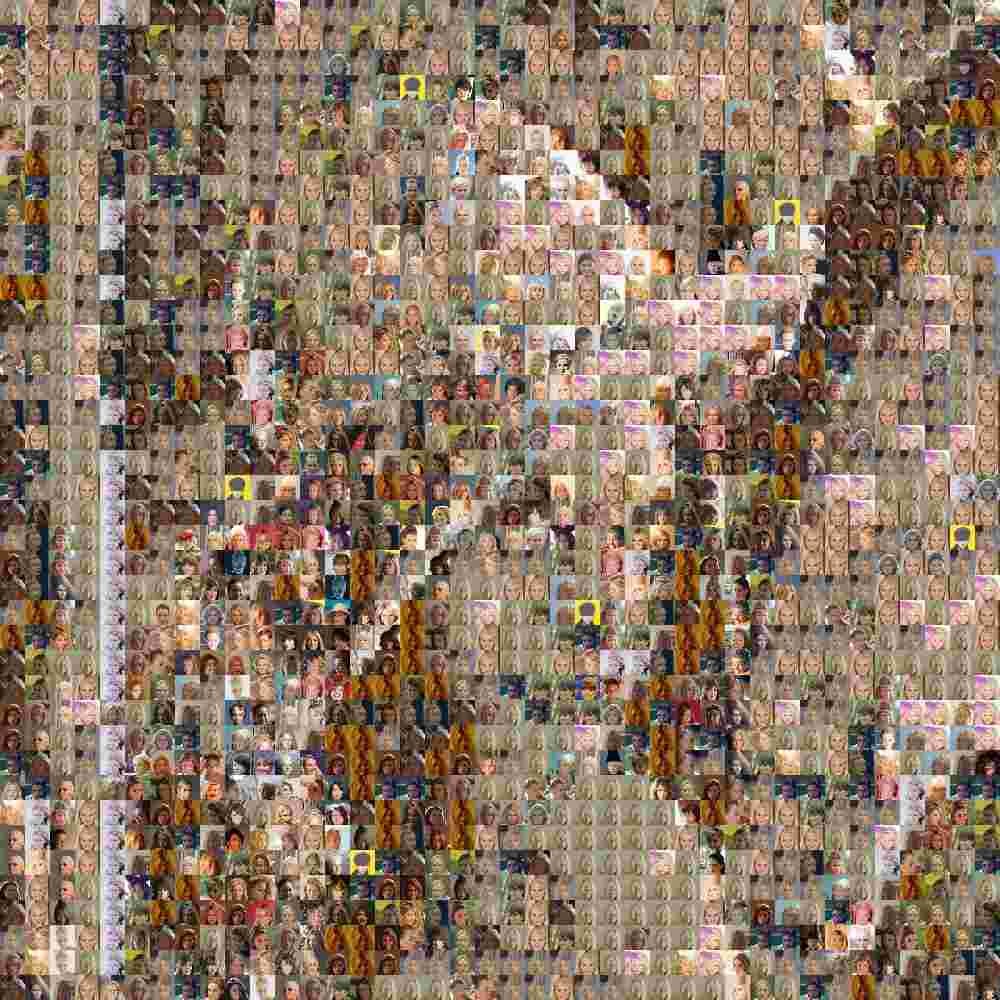Image Mosaic - Part 3
After we first checked out simple mean color and histogram approaches to generate mosaics, and how to collect extensive collections of images to use for research we can continue to more advanced approaches.
Please note that due to an error in code the Elapsed time shows 1h if compute time is <1h but above it is elapsed time in seconds so reference that before looking at Elapsed time. Also, note that tile size was increased to 25x25 as 10x10 has proven to be too small to represent any shape information contained within them.
The most used approach to comparing two images is Mean Square Error (MSE) and Root Mean Square Error (RMSE) which measures the amount of change per pixel due to the processing.
Peak Signal-to-Noise Ratio (PSNR) is similar and measures the ratio between the maximum possible power of a signal and the power of corrupting noise that affects the fidelity of its representation.
The results from MSE, RMSE, and PSNR are identical for images. Execution time is similar with MSE finished first with 2:29 minutes, almost half a minute faster than the next best which is RMSE. It finished in 3min, and PSNR came in third with 3:23 minutes.
Next, let’s check more computationally expensive approaches.
A universal image quality index is designed by modeling any image distortion as a combination of three factors: loss of correlation, luminance distortion, and contrast distortion. Although the new index is mathematically defined and no human visual system model is explicitly employed, experiments on various image distortion types indicate that it performs significantly better than the widely used distortion metric mean squared error.
But has one significant drawback, its computationally expensive finishing in 54 minutes, almost 51 minutes slower than MSE. This makes it unpractical for large (10.000x10.000 px, or larger) mosaics.
Spectral Angle Mapper (SAM) is a physically-based spectral classification. The algorithm determines the spectral similarity between two spectra by calculating the angle between them and treating them as vectors in a space with dimensionality equal to the number of bands. Smaller angles represent closer matches to the reference spectrum. When used on calibrated reflectance data, this technique is relatively insensitive to illumination and albedo effects.
It turned out not to be a good choice as it forgoes any color data that is important for a tile image to be perceived as part of a bigger image.
Spatial Correlation Coefficient (SCC)
Visual Information Fidelity.
ahem, it took almost 9h to produce… nothing useable for image mosaic composition.
Multi-scale Structural Similarity Index
+10h is just not feasible for results
Next, let's see how larger tiles 250x250 work with different approaches.

